Showing Spotlights 297 - 304 of 2838 in category All (newest first):
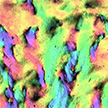 By mimicking a biological cell plasma membrane, i.e. the membrane that separates the interior of the cell from the outside environment, researchers have demonstrated that a 2D reduced graphene oxide membrane can regulate complex polysulfide chemistry in lithium-sulfur batteries. The efficiency of this separator in controlling the polysulfide chemistry and its sub-micron thickness allows to minimize the amount of electrolyte needed, which enables lightweight, high energy density batteries.
By mimicking a biological cell plasma membrane, i.e. the membrane that separates the interior of the cell from the outside environment, researchers have demonstrated that a 2D reduced graphene oxide membrane can regulate complex polysulfide chemistry in lithium-sulfur batteries. The efficiency of this separator in controlling the polysulfide chemistry and its sub-micron thickness allows to minimize the amount of electrolyte needed, which enables lightweight, high energy density batteries.
Dec 16th, 2022
 Magnetism at atomically thin two-dimensional (2D) materials is of essential interest to scientists and engineers since it has the potential to revolutionize modern information technology enabling ultra-fast and ultra-small novel electronic and magnetic devices. However, most of the experimentally demonstrated 2D magnets possess a Curie point far below the room temperature, limiting their application in the real world. In new work, researchers developed an end-to-end computational pipeline that can predict the Curie temperature accurately from the first principles-based quantum mechanical calculations.
Magnetism at atomically thin two-dimensional (2D) materials is of essential interest to scientists and engineers since it has the potential to revolutionize modern information technology enabling ultra-fast and ultra-small novel electronic and magnetic devices. However, most of the experimentally demonstrated 2D magnets possess a Curie point far below the room temperature, limiting their application in the real world. In new work, researchers developed an end-to-end computational pipeline that can predict the Curie temperature accurately from the first principles-based quantum mechanical calculations.
Dec 12th, 2022
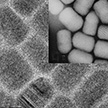 Researchers achieved a milestone in the synthesis of multifunctional photonic nanomaterials. They reported the synthesis of semiconductor 'giant' core-shell CdZnSe/CdS quantum dots with record breaking emissive lifetimes. Furthermore, the lifetimes can be tuned by making a simple alteration to the material's internal structure. These new particles have great efficacy for fundamental biological discovery as they emit at red wavelengths, which minimizes scattering, while the long lifetimes allow for biological imaging to be performed with less background noise.
Researchers achieved a milestone in the synthesis of multifunctional photonic nanomaterials. They reported the synthesis of semiconductor 'giant' core-shell CdZnSe/CdS quantum dots with record breaking emissive lifetimes. Furthermore, the lifetimes can be tuned by making a simple alteration to the material's internal structure. These new particles have great efficacy for fundamental biological discovery as they emit at red wavelengths, which minimizes scattering, while the long lifetimes allow for biological imaging to be performed with less background noise.
Dec 2nd, 2022
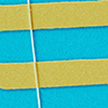 Recent investigations suggest that topological semimetals reveal unique properties that can enable unprecedented functionalities for future electronics. New research results shed light on the specifics of electron transport in quasi-one-dimensional topological Weyl semimetals and can be important for their proposed applications as downscaled interconnects. The results obtained in this work can be used for developing assessment methodologies for the reliability of topological semimetals.
Recent investigations suggest that topological semimetals reveal unique properties that can enable unprecedented functionalities for future electronics. New research results shed light on the specifics of electron transport in quasi-one-dimensional topological Weyl semimetals and can be important for their proposed applications as downscaled interconnects. The results obtained in this work can be used for developing assessment methodologies for the reliability of topological semimetals.
Nov 22nd, 2022
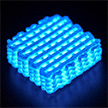 Molecular energetic ferroelectric crystals are chemical energy materials with external stimuli-dependent energy release. Researchers now report the controlled chemical energy release from spatially programmed molecular energetic ferroelectric crystals. Such stimuli-controlled metamaterials (in this case, energetic ferroelectrics), could potentially provide a pathway towards the controlled release of chemical energy and its conversion to electric energy or thermal energy for use, for instance, in energy conversion systems, energetic materials, and thermal conductors.
Molecular energetic ferroelectric crystals are chemical energy materials with external stimuli-dependent energy release. Researchers now report the controlled chemical energy release from spatially programmed molecular energetic ferroelectric crystals. Such stimuli-controlled metamaterials (in this case, energetic ferroelectrics), could potentially provide a pathway towards the controlled release of chemical energy and its conversion to electric energy or thermal energy for use, for instance, in energy conversion systems, energetic materials, and thermal conductors.
Nov 21st, 2022
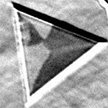 The discovery of magnetism in two-dimensional (2D) ultrathin crystals opens up opportunities to explore new physics and to develop next-generation spintronic devices. However, 2D magnetic semiconductors with Curie temperatures higher than room temperature have rarely been reported. Researchers now show that high-quality, nonlayered cobalt ferrite nanosheets as thin as a single unit cell can be synthesized via van der Waals epitaxy.
The discovery of magnetism in two-dimensional (2D) ultrathin crystals opens up opportunities to explore new physics and to develop next-generation spintronic devices. However, 2D magnetic semiconductors with Curie temperatures higher than room temperature have rarely been reported. Researchers now show that high-quality, nonlayered cobalt ferrite nanosheets as thin as a single unit cell can be synthesized via van der Waals epitaxy.
Nov 15th, 2022
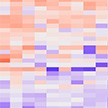 Its significance of the protein corona for biomedical applications lies in its role of imparting a unique biological identity to the nanoparticle, which could be very different from the pristine nanoparticle surface. Robust characterization of the identity and abundance of the protein corona is entirely dependent on liquid chromatography coupled to mass spectroscopy. Unfortunately, the variability of this technique for the purpose of protein corona characterization remains poorly understood.
Its significance of the protein corona for biomedical applications lies in its role of imparting a unique biological identity to the nanoparticle, which could be very different from the pristine nanoparticle surface. Robust characterization of the identity and abundance of the protein corona is entirely dependent on liquid chromatography coupled to mass spectroscopy. Unfortunately, the variability of this technique for the purpose of protein corona characterization remains poorly understood.
Nov 3rd, 2022
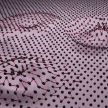 The 1T polymorph of TaS2 is one of the prominent members of the quasi-2D van der Waals materials that reveal several charge-density-wave (CDW) phase transitions in the form of resistivity changes and hysteresis. However, despite numerous attempts, the electrical gating of the CDW phase, which is needed for many practical applications, has remained elusive - until now. Researchers report electrical gating of the CDW quantum phases in h-BN/1T-TaS2.
The 1T polymorph of TaS2 is one of the prominent members of the quasi-2D van der Waals materials that reveal several charge-density-wave (CDW) phase transitions in the form of resistivity changes and hysteresis. However, despite numerous attempts, the electrical gating of the CDW phase, which is needed for many practical applications, has remained elusive - until now. Researchers report electrical gating of the CDW quantum phases in h-BN/1T-TaS2.
Nov 1st, 2022
 By mimicking a biological cell plasma membrane, i.e. the membrane that separates the interior of the cell from the outside environment, researchers have demonstrated that a 2D reduced graphene oxide membrane can regulate complex polysulfide chemistry in lithium-sulfur batteries. The efficiency of this separator in controlling the polysulfide chemistry and its sub-micron thickness allows to minimize the amount of electrolyte needed, which enables lightweight, high energy density batteries.
By mimicking a biological cell plasma membrane, i.e. the membrane that separates the interior of the cell from the outside environment, researchers have demonstrated that a 2D reduced graphene oxide membrane can regulate complex polysulfide chemistry in lithium-sulfur batteries. The efficiency of this separator in controlling the polysulfide chemistry and its sub-micron thickness allows to minimize the amount of electrolyte needed, which enables lightweight, high energy density batteries.
 Subscribe to our Nanotechnology Spotlight feed
Subscribe to our Nanotechnology Spotlight feed





